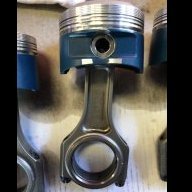For The Love Of God I Can't See! (Headlight Issue)
Announcements
-
Similar Content
-
Latest Posts
-
It really depends on your setup. Mine is 'accidently' more suited to revving higher. bigger cams, turbo etc. Plus my super long first takes donkey years to come onto boost, so if it will move my power band to the right, maybe i'll pass on this. i have a G45-1500 going on there soon which I suspect might make it more of a fat pig.
-
Yeah good call, I will endeavour to tuck that down when I rewrap the looms it’s pushed up by
-
Good work. I will say, this line circled however, will potentially pool with oil, as it's going from high, to low, to high, before heading downwards.
-
Yeah, thumbsup from me. The distant shot of the bay just looks same-same as before.
-
Dad had a court case drag out with them from 1998 to 2004. He was in a not at fault accident, NRMA were the ones who covered the other person. They tried to blame his neck injuries on the fact he'd had an injury in 1981 on his extreme lower back where he slipped a single disc right near the bottom. Had been all cleared from that injury for years. This accident destroyed his shoulder, and f**ked a heap of discs in his neck, and he still has major problems with it to this day. Sarah's sister while on her L plates had a small Suzuki Alto, she had stopped to give way to an ambulance, and someone changed lanes behind her because there lane was also slowing, and rear ended her at 80km/h. (She had been stopped for a few seconds already too!). Car was completely f**kED. NRMA sent the vehicle around to 3 different workshops as they kept claiming "We believe it can be repaired, and not written off, we just need to find the correct workshop". It took 3 months, and a lot of arguing before they'd concede and wrote it and paid out. About two years later her sister had a Lancer, someone pulled out of a stop sign without stopping (in an 80 zone). Her sister swerved, hit the front of the other persons car (Instead of dead t-boning the drivers door), which ramped her Lancer, and made it roll multiple times down the road. It hit every panel on the way through. Her sister had slid her self out of the car, and remembers the ambos walking to the accident (They'd been sitting at a set of lights just down the road and witnessed it) and they were saying "Well, this ones going to be a fatality, no way you can walk away from that". Well, she did. And then NRMA sent two assessors out to look at the car, both of which wrote it off. They tried to send another assessor out, except a HUGE uproar was raised, and they FINALLY paid it out. That was on a car, that had damage to EVERY panel, you could see from 100m away the whole car was also twisted, roof bowed etc. Nah, we'll try get out of needing to payout on a $10,000 car... Her sister ended up with major shoulder reconstructive surgery being required, and was permanently limited in her ability to do her job as a nurse after that, as she can't (And was told before surgery too this would be guaranteed to happen) regain full strength in that shoulder. However, there was no choice to not have it, as she could barely use her arm, which was her dominant one, and was in near constant major pain. (And she's the type of person that would try and walk off a broken leg!) NRMA did the biggest run around on the personal injury side too for about 18 months, even to the point of trying to put 100% blame of the accident on Sarah's sister, even though the other driver admitted she didn't look, and didn't stop, and was charged by the police. Sarah used to have a Barina insured with them. It was a policy setup, paid all 12 months in advance. At the end of the 12 months, Sarah was living with me, I reviewed the renewal, it clearly stated "If you do nothing, your policy will cease on XYZ date". We did nothing, as we moved her insurance in with all of mine and I was with Shannons. We find out 10 months later, NRMA decided, because he DAD had a car insurance policy at the same address as what Sarah's mailing address was (Garaged address had been changed), that they'd put Sarah's (What should have been non existent policy) onto her Dad's month to month charges on his credit card. We had to jump through hoops, to get a refund. They didn't care that we actually found the letter that said "If you do nothing, your policy will cease" they made us prove we had NON COMPULSORY insurance else where before they'd issue the refund, and after they agreed to the refund, it still took another 6 weeks and 3 more phone calls for them to actually process it. They also had two insurance claims from storm damage, and they were an absolute cluster to get resolved as well (one vehicle, one house). Some how, up until about 3 years ago, her parents were still loyal to NRMA too, and we were like "How the hell are you so loyal to staying with them, when other places are so much cheaper, and they've f**ked you over every time you've ever had to make a claim?"
-






Recommended Posts
Create an account or sign in to comment
You need to be a member in order to leave a comment
Create an account
Sign up for a new account in our community. It's easy!
Register a new accountSign in
Already have an account? Sign in here.
Sign In Now